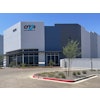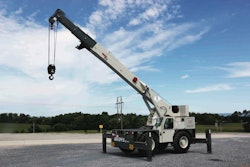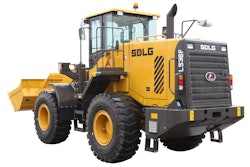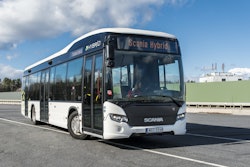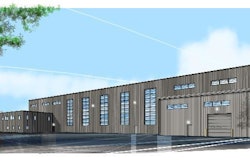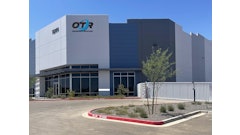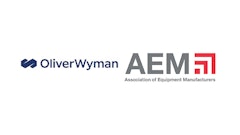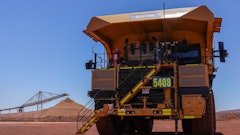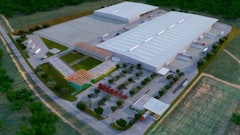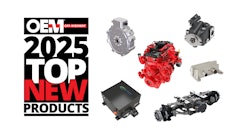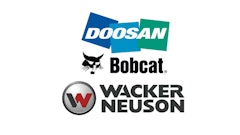New Flyer Industries Inc., the largest transit bus and motor coach manufacturer and parts distributor in North America, announces its results for the 14-week period ended April 3, 2016 (2016 Q1). Unless otherwise indicated all monetary amounts are expressed in U.S. dollars.
Operating Results
The increase in 2016 Q1 revenue primarily resulted from a 63.1% increase in total transit bus and coach deliveries compared to 2015 Q1 deliveries and a 7.2% decrease in average selling price per EU in 2016 Q1 compared to 2015 Q1. The deliveries increased primarily as a result of the inclusion of new and pre-owned coaches of Motor Coach Industries' (MCI) and an extra week in 2016 Q1 as compared to 2015 Q1. The decrease in average selling price is the result of changes in the product sales mix which now includes pre-owned coaches.
The increase in aftermarket operations revenue in 2016 Q1 is primarily a result of aftermarket revenues generated by MCI and an extra week in 2016 Q1 as compared to 2015 Q1. The pro forma aftermarket business revenue (which includes MCI) for 2015 Q1 was $122.3 million and $105.9 million when excluding the revenue from the Chicago Transit Authority (CTA) mid-life overhaul program. Therefore, the core aftermarket revenue in 2016 Q1 increased 7.0% when compared to the pro forma aftermarket revenue for the core business in 2015 Q1.
Consolidated Adjusted EBITDA for 2016 Q1 increased compared to 2015 Q1 primarily as a result of the increase in transit bus and coach manufacturing Adjusted EBITDA. Transit bus and coach manufacturing Adjusted EBITDA increased primarily as a result of increased deliveries and improved margins. Contributors to the increase in margin is a favorable sales mix, improved pricing and the positive impact from product rationalization. Profit margins can vary significantly between orders due to factors such as pricing, order size, propulsion system and product type and components specified by the customer. Management cautions readers that quarterly transit bus and coach manufacturing Adjusted EBITDA can be volatile and should be considered over a period of several quarters.
The 2016 Q1 aftermarket operations Adjusted EBITDA increased compared to 2015 Q1 as a result of Adjusted EBITDA generated from MCI's aftermarket business. As well, the Adjusted EBITDA as a percentage of aftermarket revenue during 2016 Q1 increased 1.5% when compared to 2015 Q1.
Net earnings during 2016 Q1 increased by 108.1% compared to 2015 Q1, primarily as a result of improved Earnings from Operations offset by the increase in interest and income tax expense.
Liquidity
The company's 2016 Q1 Free Cash Flow increased compared to 2015 Q1 primarily as a result of the increased Adjusted EBITDA when comparing the two periods. The amount of dividends declared increased in 2016 Q1 primarily as a result of the previous increase in the annual dividend rate from C$0.62 to C$0.70 per share.
Effective for dividends declared after May 12, 2016, the board of directors has approved a 35.7% increase in the annual dividend rate from C$0.70 to C$0.95 per share. It is the company's policy to pay dividends on a quarterly basis. The first quarterly dividend on the shares in the amount of C$0.2375 per share, if declared in June 2016, is expected to be paid in July 2016.
The April 3, 2016 liquidity position of $196.9 million is comprised of available cash of $39.8 million and $157.1 million available under the revolving portion of the company’s credit facility (Revolver) as compared to a liquidity position of $173.9 million at December 27, 2015. The increased liquidity relates to improved cash flow from operations. As at April 3, 2016, there were $171.8 million of direct borrowings and $14.1 million of outstanding letters of credit related to the $343.0 million Revolver.
Free Cash Flow
Outlook
The company’s annual operating plan for the 53-weeks ended January 1, 2017 (Fiscal 2016) is focused on completing the integration of New Flyer and NABI's aftermarket businesses, defending and growing leading market position in the heavy-duty transit bus and motor coach markets and developing an integration/combination plan for operating the acquired MCI business.
Management continues to pursue cost and overhead savings as a result of its decision to focus exclusively on the Xcelsior platform for transit buses as well as in daily operations through its Operational Excellence (OpEx) initiatives. The company's master production schedule combined with current backlog and orders anticipated to be awarded by customers under new procurements is expected to enable the company to deliver new transit buses and coaches of approximately 3,450 EUs during Fiscal 2016 (53-week period) which compares to 3,265 EUs (New Flyer plus pro-forma MCI) in Fiscal 2015 (52-week period).
With respect to the integration of MCI, the company continues to target annual synergies of approximately $10 million through the rationalization of corporate costs and deployment of New Flyer’s OpEx and sourcing expertise. As of this date, the company has achieved approximately $3.0 million of annualized cost savings. Management is taking the necessary time to evaluate and assess the various scenarios before determining the strategic action required. Once a course of action is determined, management will disclose the expected related costs associated with the estimated synergies savings.
Management maintains its guidance that the core aftermarket business (excluding CTA mid-life overhaul revenue) is expected to grow by approximately 5% in Fiscal 2016.


